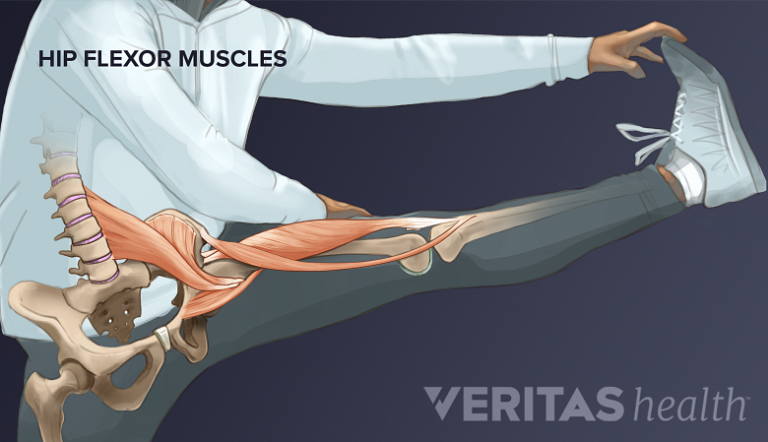How Far is 10,000 Steps? : Unlock the Secrets
10,000 steps roughly equate to about 5 miles in distance. Achieving this goal boosts physical activity levels significantly, promoting better overall health.
Walking 10,000 steps per day is a widely recommended target by health professionals to maintain an active lifestyle. It is known to improve cardiovascular health, aid in weight management, and enhance mental well-being. This simple and effective form of exercise can easily be incorporated into daily routines, requiring no special equipment.
By tracking step count using devices like pedometers or smartwatches, individuals can better monitor and achieve their fitness goals. Walking 10,000 steps daily is a fantastic way to stay active and healthy effortlessly.

Credit: www.amazon.com
The Importance Of Walking
Walking is an essential form of exercise, and 10,000 steps is the recommended daily goal. But how far is that? Uncover the importance of walking and how this simple activity can contribute to improved physical and mental health.
Walking is a simple and accessible form of physical activity that offers numerous health benefits. Incorporating walking into your daily routine can significantly improve your overall well-being, both physically and mentally. Whether you are aiming to boost your fitness level, maintain a healthy weight, or enhance your mood, walking can be a powerful tool in achieving your health goals. In this section, we will explore the benefits of walking and how it can positively impact your health.Benefits Of Walking
Walking for Health Regular walking has been proven to have a multitude of health benefits. It can help lower the risk of various chronic diseases, such as heart disease, type 2 diabetes, and certain cancers. Additionally, consistent walking can improve cardiovascular fitness, strengthen bones and muscles, and enhance balance and coordination. Walking is also a natural way to boost your immune system and increase your energy levels. When combined with a balanced diet, walking can be an effective strategy for weight management. It burns calories, increases metabolism, and contributes to a healthier body composition. As a weight-bearing exercise, walking also helps to maintain or even increase your muscle mass, which is important for overall strength and coordination. Furthermore, walking is well-known for its mental health benefits. Regular physical activity, including walking, can reduce the risk of depression and anxiety, enhance cognitive function, and improve sleep quality. It provides an opportunity to clear your mind, boost your creativity, and reduce stress levels. Overall, the importance of walking cannot be overstated. It is a low-impact exercise suitable for people of all ages and fitness levels. Whether you choose to walk to work, take a brisk stroll during your lunch break, or enjoy a leisurely walk in nature, you can reap the rewards of this simple yet powerful form of physical activity. Below is a table summarizing the benefits of walking:| Benefits of Walking |
|---|
| Lower risk of chronic diseases |
| Improved cardiovascular fitness |
| Strengthens bones and muscles |
| Enhanced balance and coordination |
| Boosted immune system |
| Increased energy levels |
| Effective weight management |
| Reduced risk of depression and anxiety |
| Improved cognitive function |
| Better sleep quality |

Credit: livingthenourishedlife.com
What Is The 10,000 Steps Challenge?
What is the 10,000 Steps Challenge?
The 10,000 Steps Challenge is a popular fitness goal that encourages individuals to walk 10,000 steps daily.
Origin Of 10,000 Steps
The concept of walking 10,000 steps a day originated in Japan in the 1960s.
Setting The Goal
To set the goal of 10,000 steps, consider using a pedometer or step-tracking app t
o monitor your daily activity.
How Far Is 10,000 Steps?
When it comes to staying fit and active, walking is one of the simplest and most effective forms of exercise. You may have heard the recommendation to aim for 10,000 steps each day, but how far is 10,000 steps really? Let’s dive into it!
Average Walking Distance
On average, an adult’s stride length is about 2.5 feet, which means that it takes just over 2,000 steps to walk a mile.
Calculating The Distance
If we follow the average stride length, 10,000 steps would be approximately equal to 5 miles. However, individual stride length can vary, so some people may need more steps to cover the same distance.
Unlocking The Secrets Of 10,000 Steps
Discover the distance covered in 10,000 steps and unlock the secrets to achieving this daily goal. Learn how this simple yet impactful habit can transform your health and fitness journey. Explore the benefits of stepping up your physical activity and reaching new milestones.
Increased Physical Activity
Increasing physical activity is one of the key benefits of aiming for 10,000 steps a day. By incorporating more movement into your daily routine, you can improve your overall fitness and well-being.
Walking 10,000 steps might seem like a daunting task at first, but once you get started, you’ll find that it’s more achievable than you think. Breaking it down into smaller increments throughout the day can make it feel less overwhelming. For instance, taking a short walk during your lunch break, parking further away from your destination, or using the stairs instead of the elevator are simple ways to add more steps to your daily count.
Remember, every step counts towards your goal of 10,000 steps. Whether you’re walking around your house, running errands, or enjoying a leisurely stroll in the park, your efforts contribute to increased physical activity and provide numerous health benefits.
Weight Loss
Walking 10,000 steps a day can be a valuable tool for weight loss. By engaging in regular physical activity, you can burn calories and contribute to a calorie deficit, which is essential for shedding those extra pounds.
Walking at a brisk pace for an extended period of time can help elevate your heart rate and boost your metabolism. This combination of increased activity and calorie burn can have a significant impact on your weight loss journey. Additionally, walking is a low-impact exercise that is accessible to people of all fitness levels, making it an ideal choice for those looking to start their weight loss journey or maintain their current weight.
By incorporating 10,000 steps into your daily routine, you can take a step closer to achieving your weight loss goals.
Improved Heart Health
Engaging in regular physical activity, including walking 10,000 steps a day, is beneficial for your heart health. Walking is a cardiovascular exercise that helps strengthen your heart muscle and improves circulation.
When you walk, your heart rate increases, allowing your heart to pump more efficiently. This increased blood flow helps lower your risk of developing heart disease, strokes, and high blood pressure. Walking also promotes the production of high-density lipoprotein (HDL) cholesterol, which is the good cholesterol that helps remove low-density lipoprotein (LDL) cholesterol, commonly known as the “bad” cholesterol, from your arteries.
Incorporating 10,000 steps into your daily routine can significantly contribute to improving your heart health and reducing the risk of cardiovascular diseases.

Credit: www.amazon.com
Frequently Asked Questions Of How Far Is 10,000 Steps?
Can You Lose Weight Walking 10,000 Steps A Day?
Yes, walking 10,000 steps a day can help with weight loss by increasing your daily calorie expenditure. It’s a simple and effective way to boost physical activity levels and support weight management. However, achieving weight loss also depends on factors like diet and overall lifestyle.
How Many Miles Is Walking 10 000 Steps?
Walking 10,000 steps is approximately 5 miles. This distance may vary based on individual stride length and pace.
Is 10,000 Steps A Day Realistic?
Yes, 10,000 steps a day is a realistic goal for most people to achieve and maintain for good health.
How Many Steps In 1 Mile?
A mile consists of approximately 2,000 to 2,640 steps, depending on a person’s stride length.
Conclusion
Striving to reach 10,000 steps daily can significantly boost your health and well-being. Remember, distance is just a number; it’s the effort that counts. Incorporate small changes for big impacts on your fitness journey. Keep moving, stay motivated, and embrace the benefits awaiting you!





